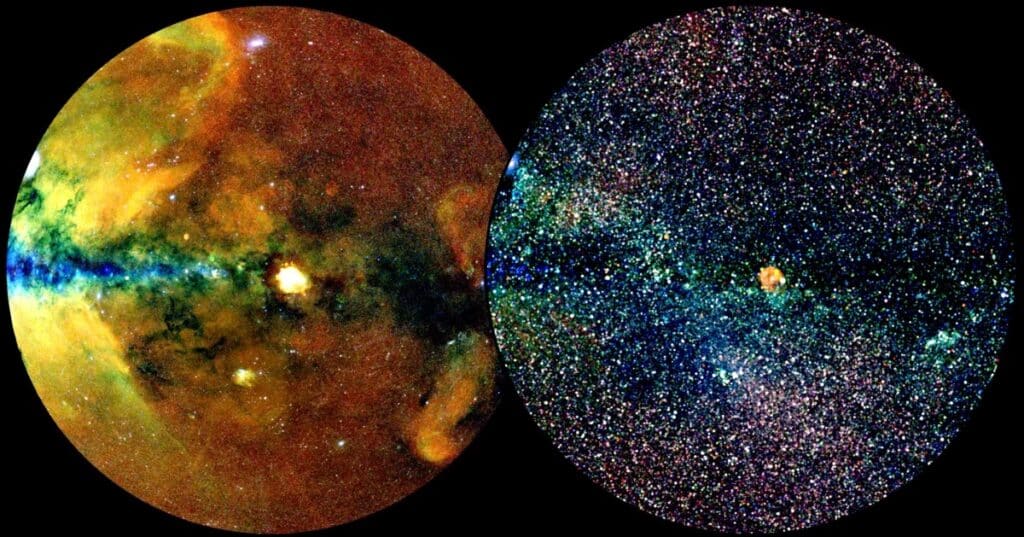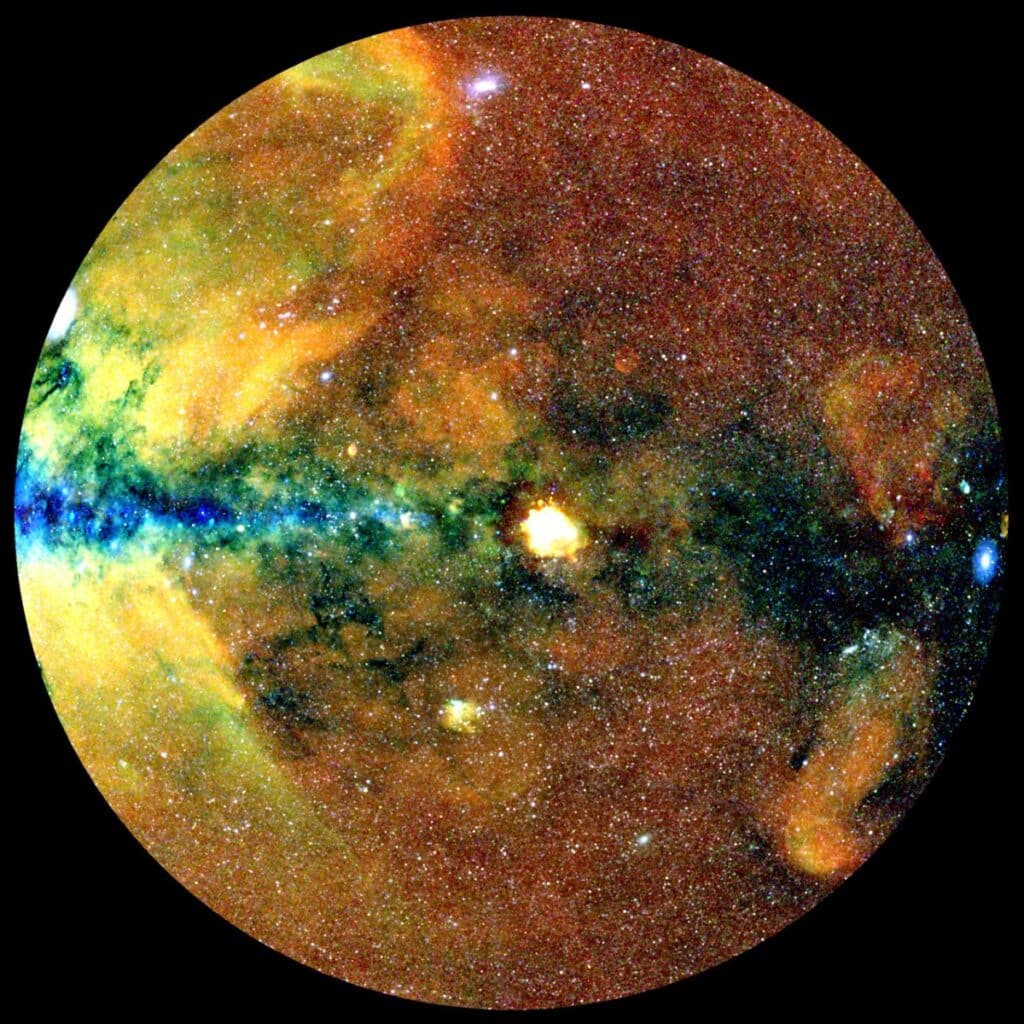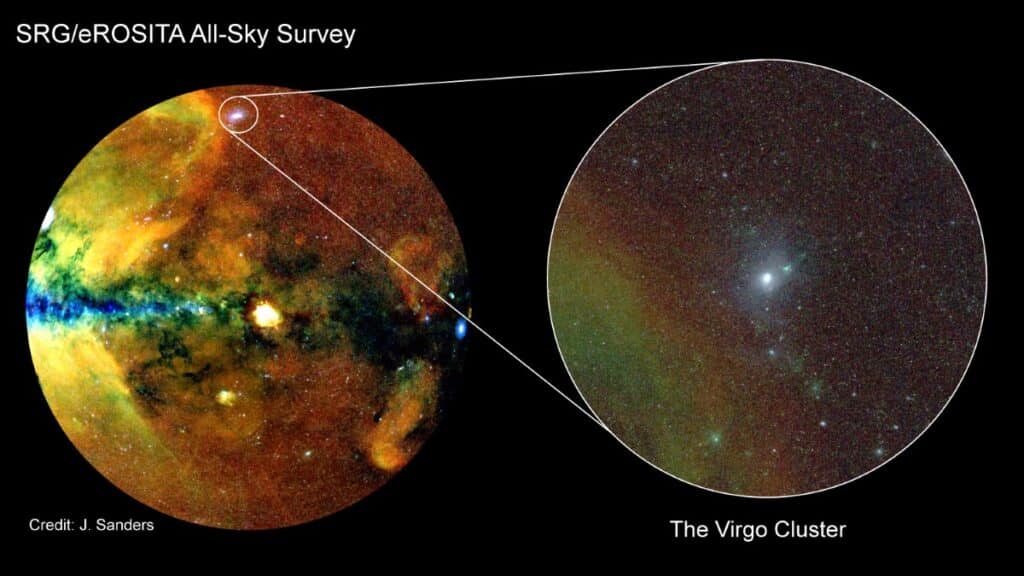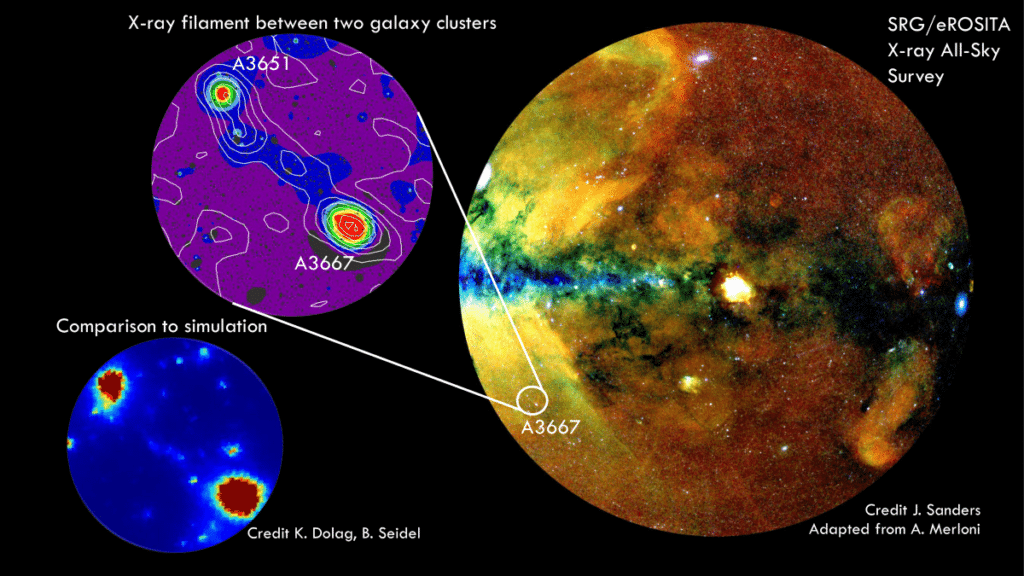
In these two images, a special image processing algorithm is used to separate extended features (left) from point sources (right).
(Photo: © MPE, J. Sanders for the eROSITA consortium)
A consortium of German astronomers has released a detailed sky map that includes over 710,000 supermassive black holes in distant galaxies, 180,000 X-ray emitting stars in our own Milky Way, and 12,000 clusters of galaxies. All of the data was collected via the eRosita X-ray telescope in just six months, which shows the power of this type of telescope.
The eROSITA telescope was launched on the Spektrum-RG satellite in July 2019. That December, it began collecting data for the all-sky survey. The work terminated in June 2020 and astronomers were thrilled with the quantity and quality of what it recorded.
“These are mind-blowing numbers for X-ray astronomy,” says Andrea Merloni, eROSITA principal investigator and first author of the eROSITA catalog paper. “We’ve detected more sources in six months than the big flagship missions XMM-Newton and Chandra have done in nearly 25 years of operation.”
The eRosita All-Sky Survey Catalogue (eRASS1) is the largest collection of X-ray sources ever published and has sparked a plethora of new scientific publications as scientists are getting a new view of deep space. Some highlights of these papers include the discoveries of more than 1000 superclusters of galaxies, the giant filament of pristine warm-hot gas that acts as a bridge or highway between two galaxies that are 42 million light-years away from each other, and two new black holes that appear to periodically erupt.
“The scientific breadth and impact of the survey is quite overwhelming; it’s hard to put into a few words,” says Mara Salvato, who, as a spokesperson for the German eROSITA consortium, coordinates the efforts of about 250 scientists organized into 12 working groups. “But the papers published by the team will speak for themselves.”
For anyone who wants to dive deep into the data, it has been released by the Max Planck Institute of Extraterrestrial Science. And the Institute promises that this is just the beginning of new material that will be released as a result of eRASS1.
A consortium of German astronomers has released a detailed sky map, which was put together using the eROSITA X-ray telescope.

This image shows half of the X-ray sky projected onto a circle (so-called Zenit Equal Area projection), with the center of the Milky Way on the left and the galactic plane running horizontally. (Photo: © MPE, J. Sanders for the eROSITA consortium)
The eRosita All-Sky Survey Catalogue (eRASS1) has already led to some interesting new discoveries.

This X-ray image shows the full extent of the Virgo Cluster, which is the closest galaxy cluster (collection of galaxies) to us. (Photo: McCall al. (2024))

(eROSITA X-ray image with the newly discovered filament between two galaxy clusters.) Photo: Dietl et al. (2024)
